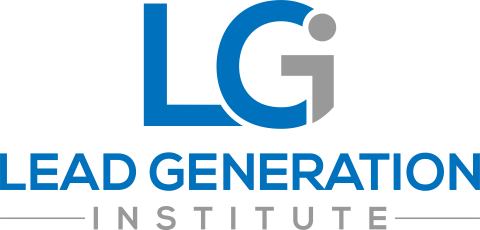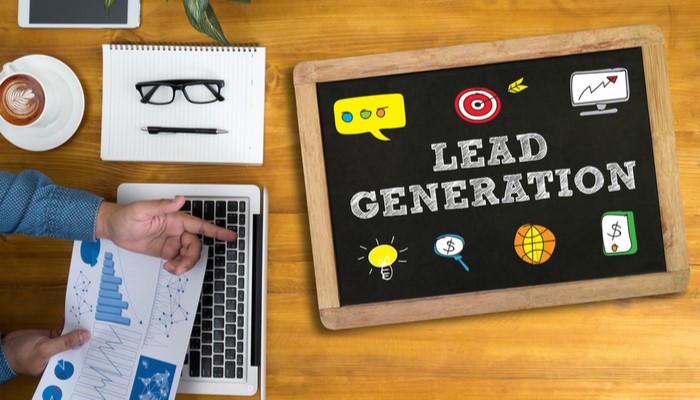Lead generation is a critical element of business for every company out there. When it comes to B2B lead generation, this is even more important, since B2B leads are more scarce than those for B2Cs. Therefore, B2B companies need to work much harder to stand above their competition and draw the attention of their potential customers.
According to the statistics, the top priority for B2B professionals isn’t increasing lead volume, per se. While 55% of B2B professionals name increasing lead volume as a priority, more (68%) say increasing the number of quality leads is the greater focus. Not incidentally is the fact that the biggest B2B lead generation challenge is also a high-quality lead generation (at 59%).
Further down the line in terms of priorities, we have better measurements and analysis of marketing initiatives (41%) as well as improving marketing and sales alignment (39%). As for what other challenges B2B marketers consider problematic for their lead generation efforts, there is lead-to-customer conversion (42%), effective lead nurturing (37%), and demonstrating lead generation ROI (36%).
What is B2B Lead Generation in 2020?
B2B lead generation is the process of identifying, screening, and capturing potential buyers for your product and/or service. A lead is, therefore, a qualified prospect that shows certain demographics and firmographic qualities, while also having an interest in what you have to offer.
Since every business is, more or less, unique, there is no one-size-fits-all approach to B2B lead generation. There are plenty of lead generation channels to employ, and companies need to figure out which ones will make the most sense for their individual needs. That said, lead gen tactics typically fall within two broad categories: inbound and outbound lead generation.
Inbound Lead Generation – This is about creating content that attracts and captures leads by offering something of value in exchange for information that helps you guide them through the sales funnel. Basically, inbound lead generation is about helping your leads find your brand more easily, boost brand visibility and credibility, and help your prospects find the information they need. Some inbound lead gen tactics include:
Outbound Lead Generation – This type of B2B lead generation is about using targeted channels to proactively reach out to prospects. Outbound lead gen is not about maximizing visibility but about delivering information to the right people and connecting with them directly. Common outbound lead generation channels and tactics include:
With so many lead generation strategies to choose from, it only stands to reason that B2B marketers focus their efforts on those that make the most sense for their business. Instead of choosing inbound over outbound or vice-versa, B2B professionals should look to combine the strengths of both tactics and maximize their overall lead generation efforts.
The Tools Needed for B2B Lead Generation in 2020
Implementing a successful lead generation strategy is no longer about spreadsheets and whiteboards. You will need a specific set of digital tools capable of handling and streamlining the many processes that go into B2B lead generation. This collection of tech tools is what’s known as a marketing technology (martech) stack. Below is a short rundown of some of the tools needed to run a comprehensive lead gen campaign.
- Customer Relationship Management (CRM) Software
- Content Management System (CMS)
- Landing Pages and Website Optimization
- Social Media Marketing
- Marketing Automation Platform (MAP)
- Ad Tech
- Live Chat Tools
- Webinar Software
- Web Analytics and Testing
In-House vs. Outsourcing B2B Lead Generation
It should go without saying that B2B lead generation is labor-intensive. Aside from the technologies mentioned above, companies will also have to dedicate a professional team of experts to handle their marketing and lead generation. When we include all the costs of purchasing, maintaining, and updating these digital tools, as well as all the overhead costs associated with hiring, training, and paying the marketing team, costs can be quite high.
It’s at times like these when may B2B organizations may start to consider outsourcing lead generation to third-party organizations. There are pros and cons to both an in-house team and outsourcing.
- Process Control – An in-house marketing team will offer better overall process control.
- Expertise – Outsourcing lead generation will often give you access to a wider talent and skill pool that will not need training.
- Data and Technologies – An in-house B2B lead generation campaign will require a significant investment in technologies and data. By outsourcing lead generation, these tools will be included in your package, and in some cases, the data to fuel your lead generation programs will be included as well. Intent Data can be an incredibly useful addition here. Intent Data is developed from the practice of identifying the companies that are consuming content related to your products and services on over 5000 websites around the world. This data is extremely helpful when deciding who to focus your lead gen efforts on.
- Time Considerations – An in-house marketing team will require a longer ramp-up time due to on-boarding, training, etc. Outsourcing will allow for faster deployment.
- Financial Costs – With an in-house team, you will have to deal with hiring, training, and salaries, as well as paying the associated overhead costs.
Put simply, if you already have a well-trained team and the technology to support them, in-house lead generation might be your best path forward. Do, however, keep in mind that the benefits of outsourcing B2B lead generation can add up, helping you save time and money while also increasing efficiency.
Your B2B Lead Generation & Management Plan in 2020
B2B lead gen has many moving parts, meaning that a solid lead management plan will definitely come in handy. The first step of the process is to determine the exact goals and targets you wish to reach. You will also want to determine both the quantity and quality of the leads you are going to generate and how they are to be managed by both your marketing and sales teams. Your lead gen goals should be developed to align with your broader company objectives.
Developing Ideal Customer Profiles and Personas
The next phase of the B2B lead generation process is the development of the ideal buyer personas. While this process is also important for B2Cs, B2B buyer persona development takes on a whole new dimension. For it to be successful, you don’t only include demographic characteristics but firmographic ones as well. This is, in fact, a key first step for every successful B2B lead management plan.
You’ll also want to make sure that your sales and marketing teams are on the same page when it comes to defining these ideal leads. A good strategy to employ here is Account-Based Marketing (ABM), as it can help bridge the two departments.
The Ideal Customer Profile (ICP) – An ICP is a detailed description of companies that will stand to gain the most from your offer. As such, the ICP will act both as a guide and as a filter, helping you differentiate between high-volume accounts and ill-fitting companies. Include as many firmographic characteristics into your ICP as possible. These may include business size, maturity, the technology they use, and everything else in-between.
Another useful tip is to study your best customers and determine what they all have in common, such as industry, size, technology, turnover rates, etc. Look to rank these ideal customers based on what they get from you and what they can offer in return as a customer. Also, take into account other potential benefits you can get from them, such as referrals, positive reviews, market insights, etc. Finally, segment your target customers into tiers based on their readiness, willingness, and ableness to buy.
The Buyer Persona – Unlike the ICP, which focuses on companies, the buyer persona is all about the individual decision-makers you will be marketing and selling to within these companies. It’s important to realize that within most B2B organizations, you’ll find anywhere from six to seventeen stakeholders involved in the purchasing and decision-making process. In fact, statistics show that there are, on average, 6.8 decision-makers that you will need to win over in order to close the deal.
Among these, we can include such stakeholders as technical buyers, financial authorities, end-users, influencers, and others. Each of them will have their own questions and pain points that will need to be addressed individually. As part of your content marketing strategy, you will need to learn what these are and work to create content that tackles these pain points at every stage of the buyer journey.
Learn – I think I have a problem.
Solve – How do I solve this problem?
Compare – Am I solving the problem the right way?
Purchase – Help me make a purchase decision.
Loyalty – Show me you appreciate me as a customer.
Attracting and Converting Leads
By the time the average buyer reaches out to a vendor, they have already completed about 70% of their purchase process. This means that almost three-quarters of the B2B lead generation process happens without the direct guidance of your team.
This, however, doesn’t mean that you should just sit idly by and wait for new leads to fall into your lap. You should take a proactive approach and try to connect with new leads before this happens. You will need to combine both inbound and outbound lead gen channels in a way that caters to your leads throughout their entire buyer journey.
Content mapping will allow you to make the information easier for your prospects to find. With it, you can map out the entire buyer journey for each buyer persona’s perspective, delivering relevant resources to specific audience segments at the right time. The key aspect to keep in mind here is to deliver a consistent experience across all the different channels. Second, you need to put every touchpoint into the right context and make sure that each one reinforces the previous touchpoint to ensure a smooth slide down the sales funnel.
Customer Data Gathering
Once a prospect has shown enough interest, it’s time to gather data that will help you figure out how to best interact with that person going forward. Marketing automation platforms are great at capturing this type of information, as well as generating personalized messaging for your outbound lead generation channels. Data gathering is mostly done via landing pages, forms, and business data sites, such as LinkedIn or Hoovers.
B2B Lead Segmentation
Marketing automation workflows will also allow you to segment your leads into lists such as marketing qualified leads (MQL), sales qualified leads (SQL), opportunities, etc. These will come in handy during lead nurturing, helping you send out more personalized and relevant content. These lead segmentation lists will also become useful when applied to highly targeted campaigns.
B2B Lead Scoring
The next step in a B2B lead generation strategy in 2020 is a lead scoring system. This is a process where you set up a reward point system that will qualify your leads every time they “tick” certain criteria. Your leads will begin to accumulate both positive and negative scores based on a wide variety of factors.
These can be explicit variables such as job roles, industry, company size, revenue, and other characteristics as well as implicit behaviors, such as website visits, repeat visits, email opens, content downloads, and unique page views. In addition, you can have velocity markers such as recent engagement and timing of events that indicate an imminent intention to buy.
B2B Lead Nurturing
[bctt tweet=”Statistically, only about a quarter of all leads will make a purchase in the first year. The remainder will need two or three years before they do the same.” username=”@LeadGenInst”] Lead nurturing will help you build lasting relationships with these leads that are not “Sales Ready”, guiding them through the remainder of the sales cycle. B2B lead nurturing will involve all of the aforementioned steps, such as content mapping, segmentation, and lead scoring to improve sales efficiency and conversion rates.The B2B Lead Handoff Plan
Once a lead has passed its MQL stage, it moves to the sales department to be vetted and turned into a sales accepted lead (SAL). Again, lead scoring will help you determine whether your leads are ready to be handed off to your sales team. It’s imperative that both your sales and marketing teams are in agreement regarding when this happens and that the lead is passed on with all the necessary information, such as the lead’s background and activity. Also, you will need to establish specific follow-up and notification protocols. Most CRM systems will help you manage and track these opportunities.
Measuring B2B Lead Generation Performance
Last, but not least in the B2B lead generation process is proper performance tracking and measurement. Testing needs to be implemented at every stage of the lead gen process by integrating marketing automation and CRM tools to help identify which channels and tactics work best, and by constantly optimizing these processes. Since there are numerous moving and interdependent parts, measuring lead generation performance can be quite a daunting task for many marketers.
With multiple channels and touchpoints, alongside hundreds of data points tracked in real-time, B2B lead generation will generate tremendous amounts of data. Therefore, you will need to narrow down your KPIs, set up your SMART goals, and revisit historical data to set realistic and attainable targets.
If you want to learn more about B2B lead generation best practices going into 2020 and beyond, subscribe to our newsletter and get the latest delivered to your inbox.




